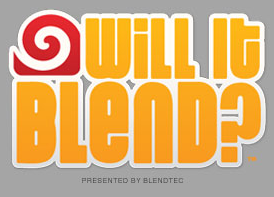Good, Bad and Strange at the Super Bowl

It's time to once again ignore the game itself and focus on the most important facet of the Super Bowl: the ads. This year presented a few hits, plenty of misses and an abundance of "what was that?" moments.
Return to Greatness
Let's start with the comeback kid of this year's bowl advertising: Doritos. You may remember their awful user generated effort from last year. This year they came out with two spots. The first was another gimmick, introducing Super Bowl viewers to the winner of an emerging artist contest. The reason this gambit succeeded is that the winning artist, Kina Grannis, is pretty good. But it was Dorito's second ad that made me laugh out loud. In it, a man baits a mousetrap with a Dorito and is then attacked by a giant mouse. Solid comedic gold.
Almost There
Two ads almost deserve to be inducted into the Super Bowl advertising hall of fame. In Bridgestone's second spot of the bowl, Bridgestone's tires enable a driver to avoid hitting a deer, Alice Cooper and then, after a moment of indecision on the part of the driver, Richard Simmons. In that moment of indecision, when I thought the driver would smash his car into Mr. Simmons, I was ready to stand up and cheer. But Bridgestone, or perhaps their agency, chickened out and swerved to avoid Richard along with the inevitable controversy that would ensue.
Budweiser's Clydesdale Training ad was an obvious parody of Rocky, and would have been epic if only the Clydesdale in question had ran up the steps of the Philadelphia courthouse. Without that, it was just OK.
What just Happened?
Several spots left me wondering what could have possibly convinced their parent companies that this was a good way to spend several million dollars. CareerBuilder.com's Follow Your Heart ad was definitely the winner in this category. Seeing an animated human heart rip itself out of a woman's chest and schlurp its way out of her office doesn't seem like the best way to build your brand, but it was certainly memorable.
The Funniest
It is a simple fact of life that if you are drinking soda and Will Ferrel comes on screen, you will snort that soda through your nose. Jackie Moon endorsing Bud Light was the funniest moment of the Super Bowl. If Bud Light doesn't put up billboards that say, "Bud Light, Refreshes the Palate and the Loins" and "Bud Light, Suck One" they've missed a golden opportunity. Sadly, the rest of the beermaker's offerings were disappointing.
Very Personal Favorites
There were two ads that I thought were brilliant, but I somehow doubt impacted the greater American audience. The first was Garmin's offering in which a very short Napoleon is able to navigate Paris with the help of his GPS device. The driving, the vehicle, and the conceit of Napoleon being short were brilliant, but how many football fans will be inspired by a short Frenchman to buy a GPS?
The second was Coke's ability to bring together James Carville and Bill Frist. Now, I'm a pretty hardcore political junkie, and it took me about half the commercial to remember who Bill Frist was. I loved the ad, but I'm afraid that the demographic of political junkies who love football might be a bit small for Coke's ad to have the impact they'd hope for. However, they made up for it in their other spot in which a giant Stewie baloon is defeated by Charlie Brown. Another personal favorite. I mean, Charlie Brown finally got something he wanted. And it was a Coke. Absolute brilliance.
The Best
My personal favorite of the game was Audi's introduction of their R8. I doubt there's anybody in the car world that doesn't respect Audi's engineering, but they're often cited for their lack of "soul". By suggesting that the new R8 cut the front off another luxury car and placed it in a wealthy man's bed, a'la The Godfather, Audi's perfectly imbued the model with "awesomeness". When it was over I wanted to stand up and cheer. What person with a beating heart and a spare $100K wouldn't want to buy one?
The Rest
To watch the rest of this year's ads, you can head over to Spike. And don't miss Seth Stevenson's insightful take on the subject.




